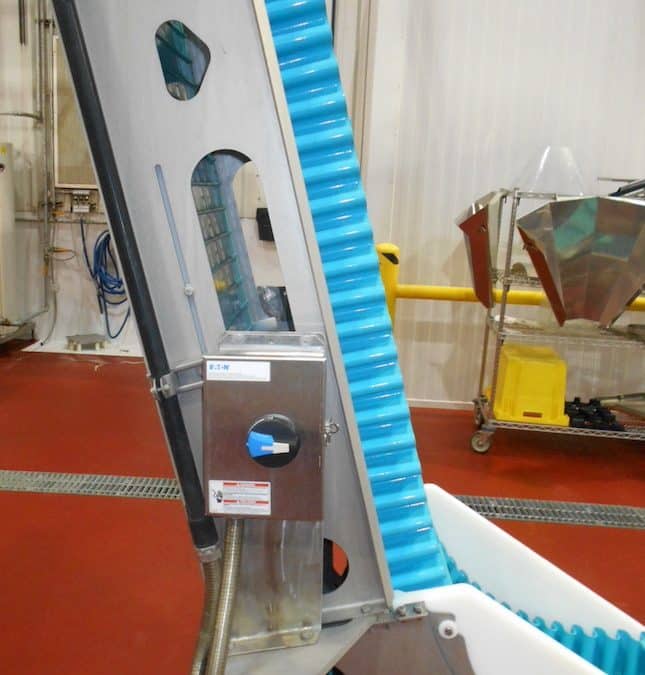Dairy 3A Screeners
3-A sanitary vibratory screeners are the best option for removing impurities from milk, cream, cheese, and other dairy products because the vibration reduces pooling and allows more flow-through per square inch. Forced screening is not recommended as screen breakages are the second most common source of metal contaminants in dairy products (more on this in the Costco section below). As with most equipment we sell, these gap-free screeners have been optimized for the application and are available in sizes from 24 to 60 inches in diameter.

Designed to scalp oversize particles as small as 38 microns (400 mesh) from dry bulk materials or solids-laden slurries, this unit can be disassembled without any tools for rapid sanitizing. The interlocking flange of the screen frame completely encompasses the support ring of the screen, allowing the wire mesh of the screen to extend entirely to the interior walls of the frame, eliminating the gap found in conventional screeners where materials could accumulate.
The sanitary, gap-free design can eliminate contamination caused by bacterial growth while also improving sanitizing efficiency, making it suitable for food, dairy, and pharmaceutical products. The screens are mounted on support rings using FDA-approved epoxy and sealed with FDA-approved gasket material. They can also be provided with a mesh-tolerance certificate. The wire mesh screening material is available in 304, 316, and “magnetic” 400-series stainless steel that can be captured by a downstream magnet if broken. They can also be equipped with either single or twin imbalanced-weight gyratory motors and can be supplied with a dust-tight cover.
Low Profile Option
The low-profile option, also called a check-screener, uses two unbalanced-weight gyratory motors located on opposing exterior sidewalls instead of a single motor positioned below the screening chamber, which greatly reduces the minimum height requirement. This low-profile configuration allows on-size particles to pass quickly through the screen in a vertical discharge path at higher rates than circular screeners that have centrally mounted gyratory motors and horizontal discharge paths. Check-screeners do not have a discharge for sorting and is only for catching contaminants, so any contaminants/oversize material must be manually removed or eliminated using a vacuum.
A Word About Screeners and Costco’s X-Ray Exception
Although untrue, Costco believes that x-ray cannot find metals in dairy products, so they provided an exception in their universal x-ray requirements for suppliers. On these grounds they said dairy producers could use screeners instead of x-ray. If satisfying Costco’s requirements is your primary goal, these vibratory screeners are the safest to use. But if foreign material contamination is a high priority for you, we recommend using x-ray anyway, because broken screens are the largest cause of metal contaminants in dairy products, after mixers. If the cost of x-ray is prohibitive for your company, a cheaper precaution is to use a centrifugal sifter with a mesh screen. But either way, the mesh gap needs to be smaller than the maximum contaminant size.
If you have any questions or would like a quote, simply fill out the form below or give us a call!
Related Equipment

Cyclone Dust Collectors
Cyclone dust collectors use centrifugal force to separate dust particles from the air stream. They are designed for use in a wide range of industrial applications, including cement and minerals processing, power generation, and chemical...

Cleated Belt Conveyors
Cleated belt conveyors are standard conveyors with raised edges (cleats) to keep product in place and prevent it from sliding or falling off the belt as it moves. This allows greater capacity and conveyance up slopes. The cleats can be made of...

Corrugated Belt Conveyors
Corrugated belts feature walls which are expandable so they can wrap around pulleys, and are often combined with cleats to form buckets. Although corrugated belts are also used in food processing plants as pictured here, they are most commonly...

Roller Mills
Roller mills use cylindrical, opposing rollers to crush or grind material that is fed between them. They are used for medium to coarse grinding where control is key, and are capable of producing a wide range of particle sizes. Roller mills are...
